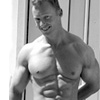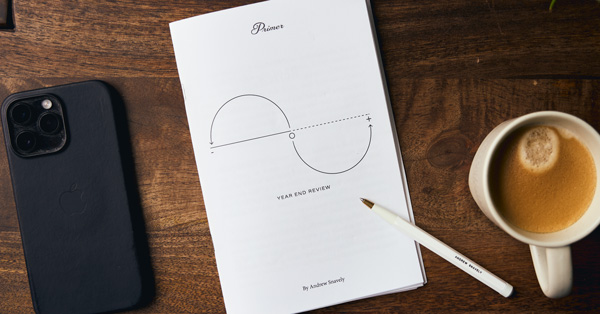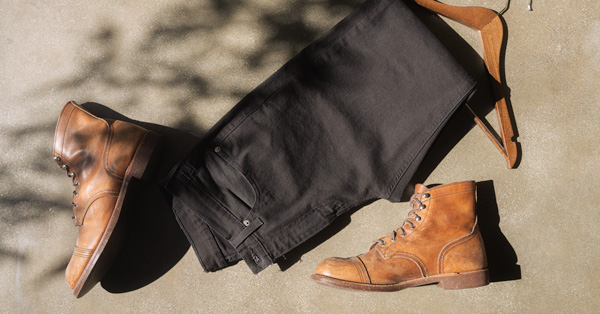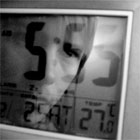Brad is a university lecturer with a master’s degree in Kinesiology and is a Certified Strength and Conditioning Specialist (CSCS) with the National Strength and Conditioning Association (NSCA). He has competed as a drug-free bodybuilder, is a cancer survivor, and a 21 year veteran of the Air National Guard. Brad has been a Primer contributor since 2011.
Strength and conditioning is a fickle subject. Just like political opinions, everyone has their own idea of what works and what doesn’t. But after 30 plus years pounding the weights in the gym, I feel like I have a unique perspective or two on what’s been worth it and what to throw out. With that knowledge, I feel it’s my obligation to pass down these things so others avoid wasting time and their joints over the long haul.
The following 10 things are what I would tell any young or old startup. I’ve had to learn these the hard way with hours, days, and even years of toiling away, experimenting on all kinds of training techniques and programs. These have worked for me, and I would train any client, friend, or family member the same way.
1. Weight is almost meaningless
Let the hate mail begin. Yes, I’m aware that the word weight is right in the term weight training, but hear me out. When it comes to pure strength training, a higher load and lower rep ranges are optimal. But if hypertrophy (muscle size) is your goal then that’s where the line blurs a bit.
A study published in the Journal of Strength and Conditioning Research wanted to pit low load and high load resistance training against each other. Eighteen young men were randomly assigned either a low load (25-35 reps) routine or a high load (8-12 reps) routine. Each session consisted of 7 different exercises of 3 sets each, performed 3 nonconsecutive days per week for a total of 8 weeks.
Surprisingly, the study found that both groups built a similar amount of muscle mass, with the high load group gaining more strength. The key factor for the hypertrophy results was found to be taking sets to muscular failure [1]. Failure was the common denominator.
So it goes without saying that if building muscle and reshaping your body is the goal, there’s no need to beat your joints up with heavy weights over and over again. You don’t need to go as high as 35 reps, but a range of 10-20 should do just fine.
2. Frequency is the forgotten key
The ole bro split is still alive and well. You know the kind: one body part per day, training the whole body over 4 or 5 days. It’s become doctrine around the world and convincing anyone otherwise is futile.
I’m a big believer in training more frequently. However, training volume has to be considered if you’re going to train each body part more frequently during the week. In other words, if you're performing 16 sets for chest once per week and you want to switch to training chest twice per week, you shouldn’t double the amount of sets. Think of it more like a total weekly volume. So, instead of 32 sets for the week simply divide your 16 sets into two 8-set workouts.
In fact, science tells a similar story. A meta-analysis in the journal of Sports Medicine looked at 10 studies which performed a myriad of tests to determine hypertrophy changes. It concluded that the frequency of training each body part twice per week was superior to only once per week. The rate of three times per week has still yet to be determined [2].
Try training with a bit more frequency with the same weekly volume of sets and see what happens.
Whatever you’re doing, be sure to switch things up and expose yourself to things that seem foreign and uncomfortable.
3. Don’t overthink diet
As a skinny teenager gaining even an ounce of muscle was a struggle. I remember planning every meal and stressing over every calorie I consumed. Also, as a slender kid I was obsessed with packing in as many calories as I possibly could. I specifically focused on carbohydrates as my main source of food since they were cheaper and more available than protein. Sure, I ate my share of protein but carbs were better suited for a high-calorie diet.
Looking back it seems a bit ridiculous how much trouble I went to in order to just cram calories down my throat. It could easily be justified due to my slight build back then but I would do things differently now. The body is amazingly adaptive and resilient. I would tell any client now, skinny or overweight, to adjust calories only slightly versus huge jumps. If I’m working with a skinny teen, for example, I would most likely go over maintenance calorie levels only by 300 to 500 calories versus just trying to eat as much as possible. That way the client would develop a lean physique without the risk of gaining unwanted body fat.
4. Have a life
Relating to the last point, don’t forget to have a life outside of the gym. I remember being the stereotypical gym rat. I loved training for hours each day and would even go train on “off days” working abs, calves, and a little cardio. I was hooked.
Even though I don’t regret spending all those hours at the gym – I made some lifelong friendships from it – I would advise anyone not to fear doing things outside of weight training that would possibly make you think you’ll lose muscle and/or strength. What I mean is feel free to go play basketball, go to the park, jog a little, and do things other than just lift, eat, and sleep.
5. More reps equals more muscle
Earlier I spoke about how lighter weights resulted in just as much muscle gain as heavier loads [1]. Well, higher reps won’t only equate to muscle gain, they’ll also serve as a blessing for your longevity.
After a few years under my belt I started to adopt the heavy-duty training mentality. Low reps, lots of weight, and several intensity techniques such as forced reps (having your partner assist you with your last few reps), negatives (slowing the weight down on the descent of the movement), and drop sets (stripping weight off the bar after a set of failure and continuing for several more sets).
I was going all out all the time with heavier and heavier loads. Over time I did get quite strong, especially in any type of pulling movement, but I wasn’t gaining much muscle. I was strong, but didn’t look the part. Switching to more moderate loads and reps not only started to pack on more muscle, it saved my joints from a lifetime of agony. I no longer dreaded getting out of bed in the morning and my lower back and hips thanked me.
6. Stimulate don’t annihilate
Okay, I stole this line from the legendary eight-time Mr. Olympia Lee Haney. Lee is a living legend in the sport of bodybuilding and, in my opinion, one of the last few aesthetic and athletic looking bodybuilders that graced the stage in the eighties and nineties. With a broad upper body, small waist, and athletic legs he was a true champion and a wise trainer.
Lee adopted the “stimulate don’t annihilate” mantra as it applied to his training. He was never the type to go to extremes with the amounts he lifted or insane intensity levels. He would get in his workout, stimulate the muscle, then go home. Pretty simple.
This serves a very important purpose: longevity. If you were to go all out with insane intensity at every workout two things will eventually happen. One, you’d burn out before the week was over, and two, you’d eventually get injured. The moral of the story is to train for longevity. You can’t workout injured.
Think of your training more along the lines of creating sustainable habits versus “killing it” at every workout.
7. It’s okay to skip a meal, you won’t shrink
Along with cramming as many calories down my gullet as I could, I had the added self-imposed stress of trying my best to never miss a single meal. I felt if I miss a meal I would lose all the muscle I had built over the last six months and shrink up. Any feeling of hunger was a bad sign and it put me into a feeling of panic and being behind all the time. It was a constant state of near paranoia.
The fact is that unless you’re starving for a significant amount of time (I’m talking days) you won’t lose your hard-earned muscle. Sure, you may have times where timing of your meals may be off and you might start to feel tired or fatigued, but as I stated earlier, the body is resilient and adaptive. Don’t sweat missing a meal. Calories including protein, carbs, and fats matter more in the long term versus the hour by hour. In other words, look at your entire week as a whole when it comes to nutrition. Did you get in most of your meals? Did you eat enough protein? You’re fine. You won’t shrink.
8. Experiment more
There’s one thing to be said about sticking to a plan that works, it’s quite another to stick to a plan out of pure stubbornness. When I was younger I was a stickler for doing the same things over and over. Some seasons my routines worked well while during others they put me straight into a rut.
Yes, if it ain’t broke don’t fix it, but what about those times when you need to step out of your comfort zone and try something new? Maybe the old routine you’re doing is working but you don’t feel that same rush of excitement from it anymore. Many times our enthusiasm wanes and our workouts, no matter how effective, can suffer as a result.
In addition to any weight resistance program you’re performing, be sure to include other activities to round-out your goals. Performing straight sets? Try doing supersets or giant sets. Treadmill running? Try trail running/hiking. Circuit training? Throw in some heavier movements like deadlifts or squats.
Whatever you’re doing, be sure to switch things up and expose yourself to things that seem foreign and uncomfortable.
9. Form plus function
Lifting a weight is more than going from point A to point B. Years ago my mindset was to just lift no matter what. Sure, I tried to use good form but all I cared about was getting the weight up. Form is one thing but function is quite another. Function is more about adopting a different mindset with two main differences. One, think of lifting the weight from point A to point Z while thinking about all the points in between. Two, when starting your workout think more about training your body versus lifting weights.
Form is the act of following safe and correct paths with whatever you’re lifting. Function is more about feeling the exercise in the targeted area while thinking of all of that space between A and Z. Once you get good at function you’ll create more whole-body awareness and strength. It may take time, but practicing function along with form will not only help keep you injury-free, it’ll also allow you to lift for years to come.
10. Done is better than perfect
World-class strength coach Dan John has a smart perspective on training. He states that we have both park bench workouts and bus bench workouts. Park bench workouts are those days when you aren’t going anywhere in a hurry. On a park bench, you sit, feed the squirrels, and stay put. For bus bench workouts, your mindset is that you’re ready to go somewhere. You’re waiting on that bus to round the corner so you can get to a new destination.
According to Dan, most of your workouts should be park bench workouts. That is, you go to the gym, get a good workout in, and go home. You’re not setting personal records (PRs), or moving mountains. You’re getting in a good workout without the stress of having to always be progressing. Other, fewer days of the week, will be your bus bench workouts. These workouts are where you attempt to set PRs, crank up the intensity, and have the goals of making some significant progress.
If most workouts are bus bench then you’d burn out quickly. Performing most workouts more in maintenance mode will not only create space between more intense workouts, it’ll help you muster up energy and intensity for those bus bench days. Think of your training more along the lines of creating sustainable habits versus “killing it” at every workout.
The above 10 things are the most important points I’d teach you if I were your strength and conditioning coach. I’ve had plenty of time to put many principles through trial and error, but over time I’ve come to some realizations that training isn’t that complicated, it’s just more about sound advice and hard work. Happy lifting.
















